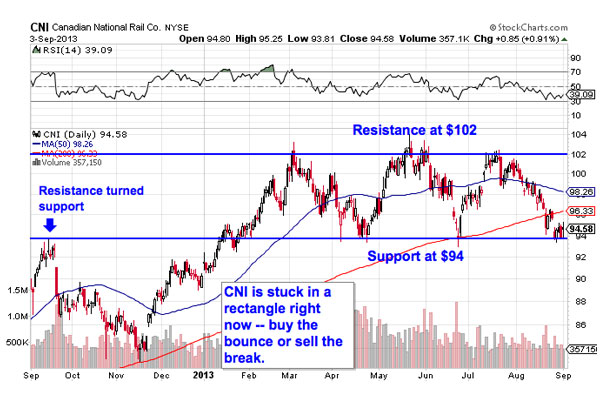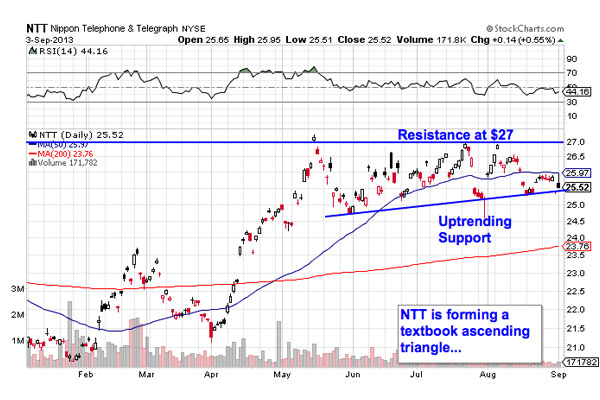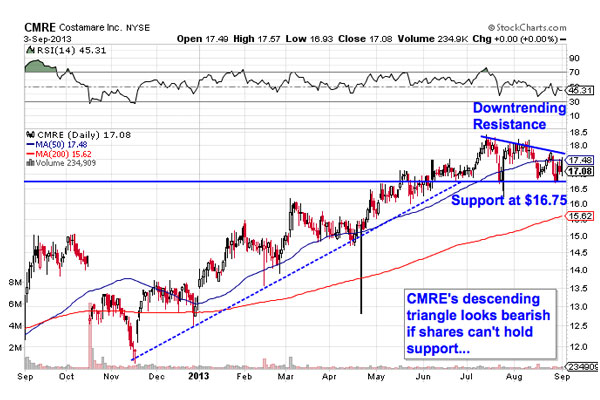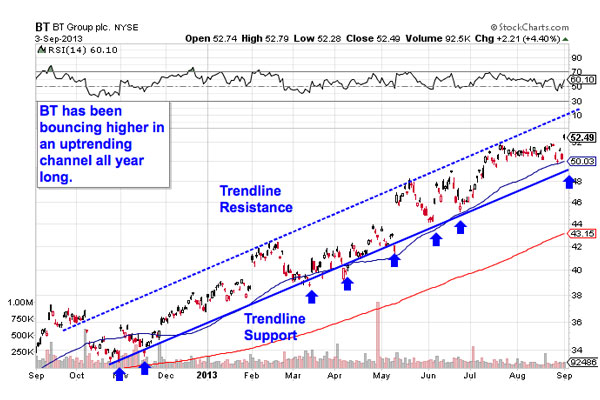HanesBrands (NYSE: HBI ) has entered into a definitive agreement to acquire Maidenform Brands (NYSE: MFB ) , Hanes and Maidenform� announced today.
Hanes is to pay $23.50 per share in cash, a 30% premium over the last 30 days' average closing price. The enterprise value of the transaction, according to Hanes, is approximately $575 million.
Hanes expects the synergies produced by combining the two intimate apparel companies to approach full value within three years and provide more than $500 million more in annual sales, and earnings per share of $0.60.
Hanes said the combination of Maidenform's bra business and Hanes' panty business will presents long-term growth opportunities. The deal would add brands like Maidenform, Flexees, and Self Expressions to the HanesBrands roster that includes Playtex, Bali, Champion, Wonderbra, and its namesake Hanes. HanesBrands anticipates being able to potentially lower the costs of Maidenform products for retailers and consumers. Currently Maidenform sources its products from third-party manufacturers. With the acquisition, HanesBrands said Maidenform will now be able to take advantage of HanesBrands' company-owned manufacturing, which is supplemented by third-party manufacturers.
Hot Companies To Invest In 2014: Berry Plastics Group Inc (BERY)
Berry Plastics Group, Inc. (Berry), incorporated on November 18, 2005, is a provider of plastic consumer packaging and engineered materials. Berry owns 100% interest of Berry Plastics Corporation. Berry sells its solutions predominantly into end markets, such as food and beverage, healthcare and personal care. The Company operates in three segments: Rigid Packaging, Engineered Materials and Flexible Packaging. As of September 19, 2012, the Company supplied its customers through 82 manufacturing facilities throughout the United States (68 locations) and select international locations (14 locations). In June 2012, the Company acquired 100% interest of Frans Nooren Beheer B.V. and its operating companies (Stopaq). In September 2011, the Company acquired 100% interests of Rexam Closures Kentucky Inc., Rexam Delta Inc., Rexam Closures LLC, Rexam Closure Systems LLC, Rexam de Mexico S. de R.L. de C.V., Rexam Singapore PTE Ltd., Rexam Participacoes Ltda. and Rexam Plasticos do Brasil Ltda. (collectively, Rexam SBC). In August 2011, Berry acquired 100% interest of LINPAC Packaging Filmco, Inc.
Rigid Packaging
The Company�� Rigid Packaging business consists of containers, foodservice items, house wares, closures, over caps, bottles, prescription vials, and tubes. The end uses for these products are consumer-oriented end markets, such as food and beverage, retail mass marketers, healthcare, personal care and household chemical. The Company manufactures a collection of container products. The Company produces 32 ounce or thermoformed polypropylene (PP) drink cups and offers a product line with sizes ranging from 12 to 52 ounces. The Company�� products of house wares market is focused on producing semi-disposable plastic home and party and plastic garden products. The Company produces closures and over caps across several of its product lines, including continuous-thread and child-resistant closures, as well as aerosol over caps. The Company also provides a range of custom closure ! solutions including fitments and plugs for medical applications, cups and spouts for liquid laundry detergent, and dropper bulb assemblies for medical and personal care applications.
The Company competes with Airlite, Letica, Polytainers, Silgan, Aptar Group and Reynolds.
Engineered Materials
Berry�� Engineered Materials business primarily consists of pipeline corrosion protection solutions, specialty tapes and adhesives, polyethylene-based film products, and can liners served to a variety of end markets including oil, water and gas infrastructure, industrial and consumer-oriented end markets. The Company produces anti-corrosion products to infrastructure, rehabilitation and pipeline projects throughout the world. Products include heat-shrinkable coatings, single- and multi-layer sleeves, pipeline coating tapes, anode systems for cathodic protection and epoxy coatings. These products are used in oil, gas and water supply and construction applications.
Berry is the manufacturer of cloth and foil tape products. Other tape products include range of splicing and laminating tapes, flame-retardant tapes, vinyl-coated and carton sealing tapes, electrical, double-faced cloth, masking, mounting, original equipment manufacturer (OEM) medical and specialty tapes. These products are sold under the National, Nashua and Polyken brands in the United States. The Company manufactures and sells a portfolio of PE-based film products to end users in the retail markets. These products are sold under brands, such as Ruffies and Film-Gard. Its products include drop cloths and retail trash bags. The Company manufactures customized PP-based, woven and sewn containers for the transportation and storage of raw materials, such as seeds, titanium dioxide, clay and resin pellets.
The Company offers range of polyvinyl chloride (PVC) meat film and agricultural film. Berry�� products are used primarily to wrap fresh meats, poultry and produce for supermarket applic! ations. I! n addition, the Company offers a line of boxed products for food service and retail sales. Berry sells trash-can liners and food bags for offices, restaurants, schools, hospitals, hotels, municipalities and manufacturing facilities. The Company also sells products under the Big City, Hospi-Tuff, Plas-Tuff, Rhino-X and Steel-Flex brands. The Company produces both hand and machine-wrap stretch films, which are used by end users to wrap products and packages for storage and shipping. It sells stretch film products to distributors and retail and industrial end users under the MaxTech and PalleTech brands.
The Company competes with AEP, Sigma and 3M.
Flexible Packaging
The Company�� Flexible Packaging business consists of barrier, multilayer film products, as well as finished flexible packages, such as printed bags and pouches. Berry manufactures and sells a range of film products ranging from mono layer to coextruded films having up to nine layers, lamination films sold primarily to flexible packaging converters and used for peelable lid stock, stand-up pouches, pillow pouches and other flexible packaging formats. The Company also manufactures barrier films used for cereal, cookie, cracker and dry mix packages that are sold directly to food manufacturers like Kraft and Pepsico. It also manufactures films for industrial applications ranging from lamination film for carpet padding to films used in solar panel construction.
The Company supplies component and packaging films used for personal care applications. Berry is a converter of printed bags, pouches and roll stock. Its manufacturing base includes integrated extrusion that combines with printing, laminating, bagmaking, Innolok and laser-score converting processes. The Company is a supplier of printed film products for the fresh bakery, tortilla and frozen vegetable markets with brands, such as SteamQuick Film, Freshview bags and Billboard. The Company manufactures specialty coated and laminated produ! cts for a! range of packaging applications. Its products are sold under the MarvelGuard and MarvelSeal brands and are sold to converters who transform them into finished goods.
The Company competes with Printpak, Tredegar and Bemis.
Advisors' Opinion: - [By John Udovich]
One of the most famous scenes in the cult classic, the Graduate, was when Mr. McGuire�took Dustin Hoffman�� character aside and said�"Ben, I want to say one word to you, just one word: Plastics"; but what about the Berry Plastics Group Inc (NYSE: BERY) and its performance verses that of the�iShares S&P 500 Index ETF (NYSEARCA: IVV), iShares Russell Midcap Index Fund ETF (NYSEARCA: IWR) and iShares S&P SmallCap 600 Index ETF (NYSEARCA: IJR)? I should mention that plastics and the Berry Plastics Group was not the place to be yesterday as the stock took a tumble on reduced guidance.
Hot Companies To Invest In 2014: Mediobanca(MDBI.MI)
Mediobanca S.p.A. provides lending and investment banking services to financial companies and private investors in Italy and rest of Europe. It offers consumer credit products, including personal and special purpose loans, credit cards, and salary-backed finance; corporate lending products, such as bilateral, club-deal, and syndicated loans; leveraged finance products comprising acquisition and LBO/MBO finance; structured finance products consisting of project, infrastructure, and real estate finance; and export finance products, including export credit, trade finance, L/C facilities, pre-export finance, commercial loans, untied loans, and Islamic finance. The company also provides finance leasing, mortgage lending, insurance products, deposits and current accounts, and investment products. In addition, it offers advisory services consisting of corporate finance; and fiduciary services, such as fiduciary administration of equity investments, and investments in market secur ity, as well as fiduciary services for issuers. Further, the company offers equity capital market products comprising IPOs, rights offerings, secondary offerings/accelerated book building, and equity-linked products; security brokerage services, such as equity research, equity distribution, and corporate broking services; strategic equity derivatives for equity holdings treasury shares management; direct investments and investments through fund stock units; equity-linked investments products; research services; and equity finance solutions consisting of securities lending, equity repo, and collateral financing. Additionally, it originates, structures, executes, and distributes bond issues; provides FI investor solutions, corporate solutions, private and retail solutions, and alternative advisory services; and offers private banking services, such as portfolio management, advisory and financing, and asset management services. The company was founded in 1946 and is headquarter ed in Milan, Italy.
TriQuint Semiconductor, Inc. provides radio frequency (RF) solutions and technology for communications, defense, and aerospace companies worldwide. The company designs, develops, and manufactures RF solutions with gallium arsenide (GaAs), gallium nitride, bipolar high electron mobility transistor, surface acoustic wave (SAW), temperature compensated surface acoustic wave, bulk acoustic wave (BAW), copper flip, and wafer level packaging technologies. The company offers an array of filtering, switching, and amplification products for RF, microwave, and millimeter-wave applications. It sells electronic components for mobile phones, including transmit modules, RF filters, power amplifiers and power amplifier modules, duplexers, switches, other RF devices, and integrated products to mobile device manufacturers. The company also offers signal amplification and filtering products, including a portfolio of GaAs microwave monolithic integrated circuits and transistors, and SAW and BAW filter components that support the transfer of voice, data, and video across wireless or wired infrastructure. Its network products comprise millimeter wave power amplifiers, frequency converters, and voltage controlled oscillators. In addition, the company provides defense and aerospace devices, including packaged products, die-level integrated circuits (ICs), microwave monolithic ICs, and multi-chip modules to military contractors serving the U.S. government for use in various communications and phased array radar programs, such as ship-based, airborne, and battlefield systems, as well as sat-com, electronic warfare, and guidance applications. Further, TriQuint Semiconductor, Inc. offers foundry services. The company sells its products through independent manufacturers? representatives, independent distributors, and direct sales staff. TriQuint Semiconductor, Inc. was founded in 1981 and is headquartered in Hillsboro, Oregon.
Hot Companies To Invest In 2014: Total System Services Inc.(TSS)
Total System Services, Inc. provides electronic payment processing and other services to card-issuing and merchant acquiring institutions. The company offers issuer account solutions, including processing the card application, initiating service for the cardholder, processing each card transaction for the issuing retailer or financial institution, and accumulating the account's transactions; fraud management services; and other services, such as customized communications to cardholders, and information verification associated with granting credit, debt collection, and customer service. It also provides merchant processing and related services that comprise processing various payment forms, such as credit, debit, prepaid, electronic benefit transfer, and electronic check; authorization and capture of transactions; clearing and settlement of transactions; information reporting services related to transactions; merchant billing services; and point-of-sale equipment sales and service. In addition, the company offers issuer and merchant card solutions. Total System Services, Inc. provides its services through online accounting and electronic payment processing systems. It operates primarily in the United States, Europe, Canada, Japan, Mexico, the Caribbean, the Asia Pacific, and Brazil. The company was founded in 1982 and is based in Columbus, Georgia.
Hot Companies To Invest In 2014: Cobra Venture Corporation (CBV.V)
Cobra Venture Corporation engages in the acquisition, exploration, development, and production of petroleum and natural gas interests in western Canada. The company holds a 27% net working interest in the Pembina Area; a 80% working interest in an oil well located in the Willesden Green area; and option to acquire a 13.5% working interest in the Davey Lake area located in Alberta, Canada. It also holds interests in approximately 15.78 acres of land located in the Municipal District of Rocky View No. 44, in the Province of Alberta, Canada. The company was incorporated in 1998 and is headquartered in West Vancouver, Canada.
Hot Companies To Invest In 2014: PVF Capital Corp.(PVFC)
PVF Capital Corp. operates as the holding company for Park View Federal Savings Bank that provides various banking products and services in Ohio. Its deposit products include checking, money market, and regular savings accounts, as well as certificates of deposit. The company?s loan portfolio comprises commercial real estate and business loans, commercial non-real estate business loans, residential and commercial construction loans, consumer loans, land loans, and equity line of credit loans; fixed and adjustable-rate mortgage loans for the acquisition or refinancing of single-family residential homes; and permanent mortgage loans on condominiums, multi-family, and nonresidential properties. It also engages in land acquisition and real estate leasing activities. PVF Capital Corp. operates through 17 offices located in Cuyahoga, Summit, Medina, Lorain, Lake, Portage, and Geauga Counties in Ohio. The company was founded in 1920 and is headquartered in Solon, Ohio.

 As the economy continues to improve, it's pretty clear that the Fed will curb its buying of securities to signal a change in interest rate policy. The very mention of this has caused Treasury yields to increase, but let's not get ahead of ourselves.
As the economy continues to improve, it's pretty clear that the Fed will curb its buying of securities to signal a change in interest rate policy. The very mention of this has caused Treasury yields to increase, but let's not get ahead of ourselves.




